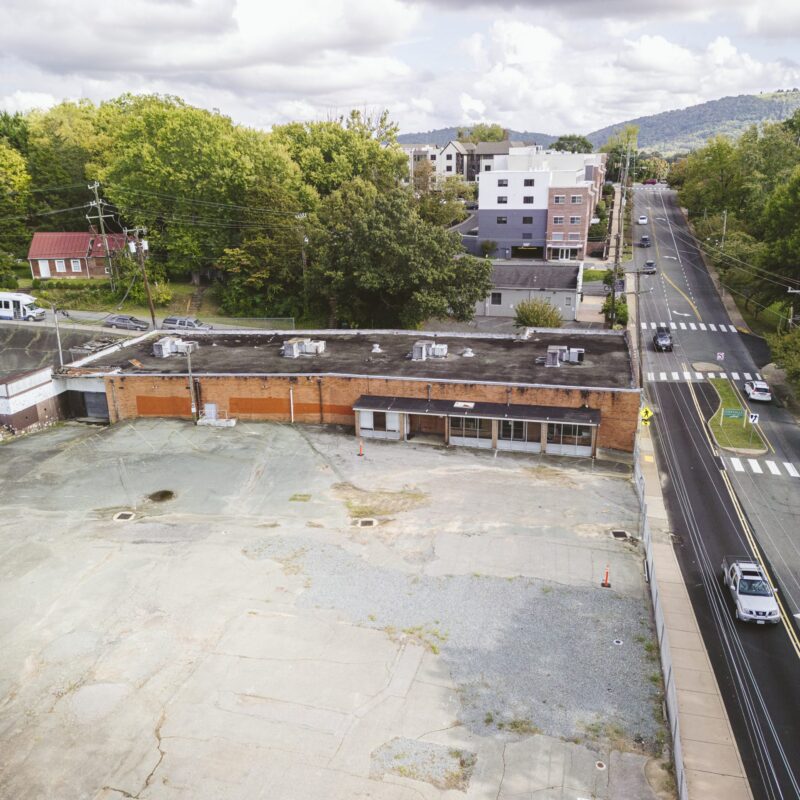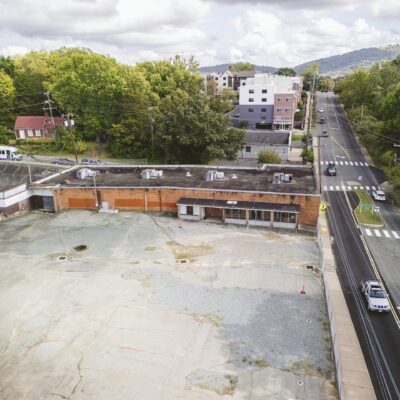Today in C-VILLE, the feature story is yours truly’s look at Albemarle County’s Neighborhood Model, and how one of its main principles—walkability—is playing out so far in Hollymead Town Center. HTC, by virtue of its size and complexity, has often come under this paper’s lens. We think it bears watching because it represents such a huge change on its northern Albemarle site, and because it’s one of the first main developments approved after the Neighborhood Model was adopted.
It seems the county’s lofty goals—keeping growth contained in designated areas, having it follow a more dense, urban, mixed-use model rather than contributing to car-centric sprawl—are tough to implement. I took a sort of test walk through the residential, office and retail sections of Hollymead and found that, during this long phase of construction, the prospects for pedestrians are mixed at best.

One of a number of places in HTC where walkers are not yet well-served.
Walking for transportation (as opposed to pleasure) continues to be something a very small, determined minority undertake. It’s particularly tough in Northern Virginia, and the state overall ranks last in per-capita spending on bike and pedestrian projects.
Meanwhile, the Post recently published a different take on "smart growth"—this one based on a study of Maryland policies, which found that although that state attempted in the late ’90s to channel growth into concentrated areas, "’There is no evidence after 10 years that [smart-growth laws] have had any effect on development patterns.’"
Ouch. It seems that, in many places, powerful development interests are at least part of the reason why more enlightened patterns of growth prove less satisfying in reality than on paper. Here in Albemarle, builders are reluctant to put in sidewalks until the buildings they front are completed. That’s why you see this start-and-stop network of sidewalks at HTC right now (it’s been under construction since 2003). And developers, as opposed to the county, seem to call the shots on that point.
In Maryland, political compromise with builders meant that the 1998 smart-growth laws are all carrot and no stick—so developers have kept putting in new projects more or less wherever they want.
Clearly, despite a widespread unhappiness with where development occurs and what it looks like, state and local governments have yet to figure out a better way. Anyone know of an instance where smart growth has actually fought off sprawl in a successful way?



